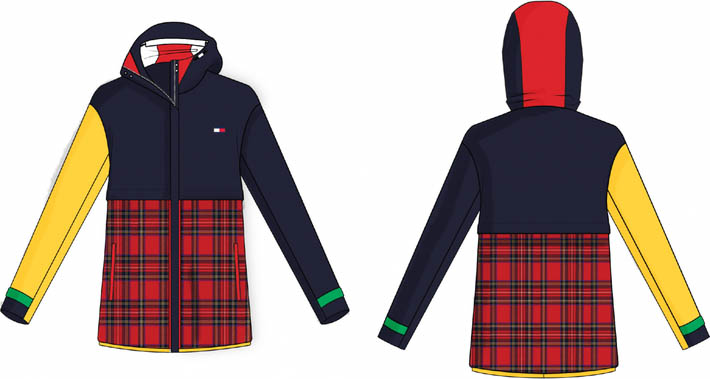Artificial intelligence is poised to radically disrupt the fashion industry landscape
By Luana Carcano
Fashion is a dynamic business. Most apparel brands make at least two to four collections per year. While selling current seasonal collections, brands plan for the next ones at least a year in advance, identifying market trends and materials. The selling window is around three months, and unsold inventories represent financial loss.
Fast fashion companies introduce new lines even more frequently, reducing the amount of time needed to design, produce and market new items.
The fashion industry is familiar with experimenting with technological frontiers. Some of the most significant technological breakthroughs are laser cutting, computer-aided design and more recently, the use of 3D printing.
The fashion industry has experimented with basic AI and other cutting-edge technologies. One example is the Gucci Garden, the label’s collaboration with virtual world platform Roblox in May 2021 to celebrate the brand’s centennial.
Non-fungible tokens (NFTs) are another area of innovation, as seen with the Dolce & Gabbana Genesi Collection in collaboration with UNXD, a digital luxury marketplace. This collection sold for US$6 million, setting a record for NFT sales.
Fashion companies also use blockchains for product authentication, traceability and digital IDs, including those integrated by LVMH/Louis Vuitton, product authentication and traceability.
Additionally, companies have incorporated augmented reality into marketing and retail strategies to create immersive and interactive customer experiences.
In 2021, fashion companies invested between 1.6 and 1.8 per cent of their revenues in technology. By 2030, that figure is expected to rise to between three and 3.5 per cent.
Generative AI could become a game-changer for the fashion industry. While the fashion sector has only started integrating AI, the opportunities and challenges it presents are evident across all business processes.
Generative AI could help fashion companies improve their processes, bring their products to the market faster, sell more efficiently and improve customer experience. Generative AI could also support product development by analysing large social media and runway show datasets to identify emerging fashion trends.

Estée Lauder Companies and Microsoft have teamed up to open an in-house AI innovation lab for identifying and responding to trends, informing product development and improving customer experiences.
Designers could use AI to visualise different materials and patterns based on past consumer preferences. For example, the Tommy Hilfiger Corporation is collaborating with IBM and the Fashion Institute of Technology in New York on the Reimagine Retail project, which uses AI to analyse consumer data and design new fashion collections.
Designers can also convert sketches and mood boards into 3D designs and 3D print them to speed up prototyping.
AI helps in creating more sustainable fashion practices by optimising the use of resources, recycling materials and reducing waste through more precise manufacturing processes and efficient supply chain and inventory management. For example, H&M uses AI to improve its recycling processes, sort and categorise garments for recycling and promote a circular fashion economy.
Brands like Zara and H&M already use AI to control supply chains, promoting sustainability by optimising stock levels and reducing waste. Zara also introduced AI and robotics into their retail stores to speed up online order pick-ups.
AI-powered virtual try-on solutions allow customers to see how clothes will look on them without physically trying them, enhancing the online shopping experience and reducing return rates.
AI can also deliver customised customer experiences. Some brands, such as Reebok and Versace, invite their customers to use AI tools to design products inspired by the brand’s feel and look.
The fashion business includes everything from small companies to global chains, haute couture to ready-to-wear, mass market and fast fashion. Each brand must understand where AI could generate value for their business without diluting their brand identity.
The biggest challenge, however, is to avoid homogenisation. Generative AI should not replace human creativity but create new spaces and processes.
Creativity and innovation remain the soul and heart of any fashion brand, and AI should be a tool to enhance and support them. As fashion designer Hussein Chalayan has said, “fashion will renew itself through technology, new fibres, new ways of making clothes.”
Fashion companies should be prepared to manage the associated risks with new technologies, particularly regarding intellectual property, creative rights and brand reputation. One of the primary issues is the potential infringement of intellectual property related to training data.
GenAI models are trained on vast design datasets, often containing copyrighted works. This can lead to legal disputes over originality and ownership.
The ambiguity surrounding creative rights in the age of AI is another concern. It’s challenging to determine who holds the creative rights to a design, whether it’s the designer who conceptualised the idea, the developer who built the AI or the AI itself. This ambiguity can dilute the authenticity of a brand’s creative expression, potentially harming its reputation if consumers perceive the brand as less innovative or authentic.
Luana Carcano is Lecturer, Beedie School of Business, Simon Fraser University. This article is republished from The Conversation under a Creative Commons licence







Click here to change your cookie preferences